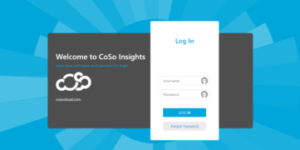
E-Learning Monitoring in Real-Time: Essential for Government Agencies?
September 13, 2018
For any organization, investing in an e-learning platform can be expensive. It’s therefore critical that the results of an e-learning project be readily available to justify that cost, and inform ongoing improvement. With smaller scale non-critical deployments, the performance of a project can often be monitored fairly easily without specialized tools, and security is less of a concern. However, this equation changes rapidly as the size and importance of a project increases.
When an organization is hosting tens or even hundreds of web conferences, trainings, and other elearning sessions, it’s no longer possible to accurately assess a project’s effectiveness and ensure security without monitoring tools geared specifically to the task. Government agencies often run e-learning platforms at this large scale. However, atop the scale-related challenges of running many e-learning sessions, government agencies also face the challenges of handling sensitive, secure, and mission-critical information that must be treated with additional care, and for which project success must be ensured.
Applications of e-learning platforms involving public safety and national security must work without fault. There are many ways of making sure this happens, including platform redundancy, robustness, and adherence to standards like those demanded by FedRAMP certification. However, the only way to be completely sure that a meeting or training underway right now is going as planned is to use a platform that includes real-time monitoring tools.
Robust Real-Time Monitoring
For government agencies adopting an e-learning platform, the way to ensure that project success is transparent from the beginning is to work with a provider that offers robust real-time monitoring tools. While platforms that offer tools for analyzing historical data can be useful for gauging the success of an e-learning deployment after the fact, when high-consequence information is involved, such as military and police training and conferencing, wildfire response coordination, and even utility maintenance planning, finding out weeks or months later that an e-learning platform wasn’t working as intended is too late.
Enabling administrators to assess the status of critical meetings as they take place with real-time monitoring is the only way to ensure they go off without a hitch. With real-time monitoring, IT-related problems can be corrected before they can disrupt critical communication, and downtime and user access problems can be identified immediately.
The Power of Real-Time + Historical Data
Real-time monitoring paired with historical data offers agencies a powerful tool for seeing current performance in the context of past trends and program goals. Working with a provider that offers not only real-time monitoring, but also access to historical data and tools for analyzing and comparing real-time with historical data can reveal a great deal of information there would otherwise be no access to. This makes straightforward the task of presenting a project’s status and analyzing its success in concrete terms.
Real-Time Monitoring for Security
While the ability to assess a project’s performance and success is a key requirement for government agencies, a foundation of secure communication is even more critical. Tools that enable real-time monitoring for security breaches are essential, and come in more than one form: providers offer tools that allow government agencies to handle security monitoring on their own, as well as provider-managed security. One of the most exciting and useful areas of provider-managed security available today uses automation to comb through mountains of logs and automatically detect anomalies. With these kinds of built-in tools now being offered by providers, administrators can rest assured their agencies’ data is secure.
For government agencies, real-time monitoring for e-learning platforms is quite often more than just a luxury. When data must be secure and meetings and trainings must happen on time, without fault, on budget, and in adherence with a predetermined plan, robust real-time monitoring tools offer the only solution.











